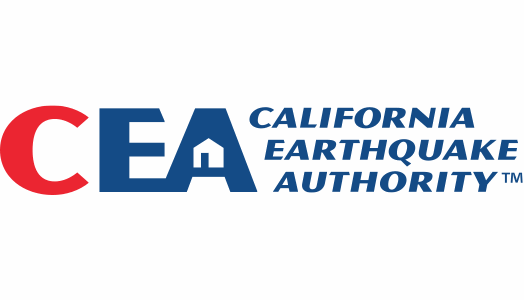The board of the California Earthquake Authority (CEA) has voted to approve a motion for the insurer to buy sufficient risk transfer to support claim-paying capacity at no less than the 1-in-350 year level and no greater than the 1-in-500 year level.
 It represents a slightly lower threshold than previous years, where the CEA has maintained a 1-in-400 year level of claims paying capacity, while the statement on risk transfer has seen the Authority able to buy up to the 1-in-550 year level of coverage, if it elected to.
It represents a slightly lower threshold than previous years, where the CEA has maintained a 1-in-400 year level of claims paying capacity, while the statement on risk transfer has seen the Authority able to buy up to the 1-in-550 year level of coverage, if it elected to.
But, with the CEA expecting strong growth in exposure to continue, even if reinsurance and catastrophe bonds were only purchased to support a 1-in-350 year level of claims paying capacity, it could still represent some growth of the risk transfer program over the coming years.
The CEA has been faced with a challenge as it has continued to grow strongly, while reinsurance pricing has risen in recent years, but the Authority wants to avoid imposing higher rates on insurance consumers.
A reduction in claims paying capacity has been seen as one way rate increases could be avoided and this appears to be the main reason for the lower minimum in the risk transfer strategy for the year ahead.
However, the flexibility still exists to buy more risk transfer, if market conditions proved conducive or if the CEA can find a way to make the cost of reinsurance capital more efficient, perhaps through how it buys protection, or faces the market.
The Board heard that in order to have maintained the 1-in-400 year level of claims paying capacity, significant rate increases or coverage reductions would be required.
At the 1-in-350 year level, for aggregate claims paying capacity, would provide immediate relief against the need for rate increases, while modifying the need for more rate to be paid by policyholders going forwards as well.
However, it does slightly raise the potential for a post loss event surcharge or pro-rate payout to be required, whole also exposing ratings more as well.
But, as this decision is for the risk transfer purchase, it doesn’t mean the CEA cannot boost its claims paying capacity using other sources and the Authority is looking at new bond issues.
While still maintaining the flexibility to buy more reinsurance or catastrophe bonds if needed, or as the market opportunity allowed.
Premiums were up roughly 7%, driven by the higher exposures assumed, and growth in insured values and exposures is forecast to continue over the next years.
But, the CEA has expanded so rapidly over the last decade, to total insured values of $567 billion by 2020, a 97% increase from 2010, that the Authority needs to look at how it can navigate the forces of funding types and sources, versus growth, while protecting its policyholders and managing reinsurance and risk transfer costs that are rising.
It looks like this year could be pivotal in how the CEA manages its risk and financing, or claims paying capacity. So we may see some fluctuation in the size of the risk transfer program in the shorter-term.
But longer-term, use of risk transfer, reinsurance and catastrophe bonds are likely to remain critical levers to help the CEA maintain its usefulness, especially as its portfolio of risk and exposure grows.
There’s likely to be some interesting conversations as to how the risk transfer markets can help the CEA and we’d hope to see the Authority looking seriously at how it can benefit from technologies to place its risk into the traditional reinsurance and capital markets, that may allow it to reduce intermediation costs, while benefiting from more optimised and perhaps better priced placements.
At the end of December 2021, the CEA’s risk transfer program reached $9.44 billion in size, slightly down on its high of around $9.6 billion.
Of that, $2.09 billion came from catastrophe bonds, the remaining $7.35 billion from other reinsurance market sources.
 View all of our Artemis Live video interviews and subscribe to our podcast.
View all of our Artemis Live video interviews and subscribe to our podcast.
All of our Artemis Live insurance-linked securities (ILS), catastrophe bonds and reinsurance video content and video interviews can be accessed online.
Our Artemis Live podcast can be subscribed to using the typical podcast services providers, including Apple, Google, Spotify and more.































